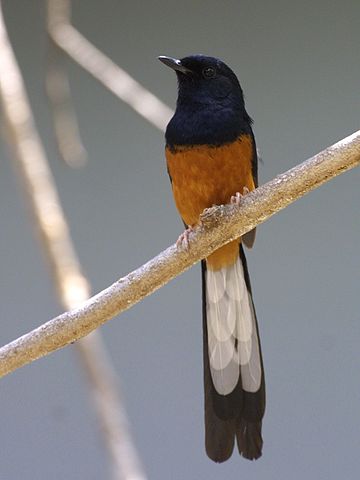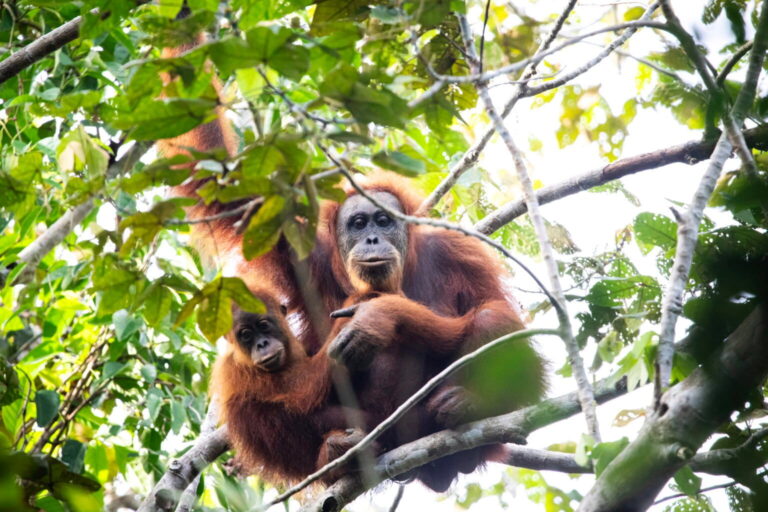- Conservationists generally believe Indonesia’s booming pet trade is driving the decline of wild bird populations, but few studies have explored its impact.
- The results of a new study bolster the case that the pet trade is driving down wild bird populations.
- The researchers looked at North Sumatra and South Sumatra.
Almost half of the forests in Indonesia’s Sumatra are within reach of the average bird trapper, finds a new study published in Conservation Biology.
Based on interviews with 49 trappers in the Tanah Karo region of North Sumatra, a team of researchers found that the average trapper won’t travel more than 5 kilometers from a road – a distance within which 49.7% of the tropical island’s remaining forests were said to lie.
The trappers said that they were catching fewer birds despite increased effort and that populations of certain species, including the white-rumped shama (Copsychus malabaricus) and the Sumatran laughingthrush (Garrulax bicolor), seemed especially hard-hit.
The researchers also found indications that the pet trade is driving down the wild populations of some species. This is significant because while conservationists generally believe the trade poses a threat to bird populations, few studies have explored its impact.
The relatively pristine Leuser Ecosystem in westernmost Sumatra is one place where most forests lie farther from roads, although new roads are being built through the jungle there.
“Unlike habitat loss, the impact of the pet trade cannot be seen via remote sensing; nor is it visible through casual fieldwork. But a growing body of evidence suggests the pet trade now poses a major, quiet threat to biodiversity in Indonesia and perhaps across Southeast Asia. We fervently hope more conservation scientists will turn their attention to the pet trade in order to understand just how widespread and serious a threat it is.”

The trappers also said they frequently caught birds in national parks and rarely encountered rangers.
Medan, the provincial capital of North Sumatra, is a major center for wildlife trafficking. The researchers also looked at the Way Canguk area of South Sumatra. They found that historically as the market prices for certain species have risen, populations have dropped, suggesting that demand for the creatures has driven their decline in the wild.
The study was led by Dr. Bert Harris, the Rainforest Trust’s director of biodiversity conservation.

Citations:
Bert Harris et al. “Measuring the impact of the pet trade on Sumatra’s birds.” Conservation Biology.














